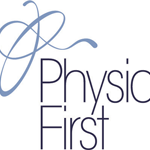Highlights:
- What is Knee Osteoarthritis?
- What are its risk factors?
- FAQ
Overview:
What Is Knee Osteoarthritis (OA)?
The term Osteoarthritis specifically means a degeneration of joint cartilage and the underlying bone. Knee Osteoarthritis is a chronic condition affecting the cartilage and bone within the knee joint characterised by pain, reducing function and quality of life.
Symptoms may include:
- Morning stiffness
- Persistent knee joint pain related to activity
- Limited knee range of motion
- Crepitus / joint noises
- Boney enlargement
- Tenderness to the touch
What are the Risk Factors for Developing Knee OA?
- Advancing age: There is an increased risk 45+ years of age.
- Excessive weight: Due to the metabolic factors associated with obesity, as well as physically carrying excessive weight, can lead to Knee OA. For example, every 1kg loss of body weight is equivalent to 2kg off the knees.
- Previous knee injuries: ACL tears, regardless if surgically reconstructed, increase the risk of developing Knee OA along with other repetitive knee injuries.
- Occupation: Repetitive squatting and kneeling for more than 2 hours per day at work is a risk factor.
- Gender: Females are more at risk for Knee OA than men after the age of 45.
- Family History: Genetics play a role in the development of Knee OA.
- Sedentary Lifestyle: Muscle weakness, particularly through the quadriceps muscles, can lead to Knee OA.
Common Questions For Knee OA
Can I just take anti-inflammatory drugs to treat it?
Knee OA results in joint inflammation; however inflammation isn’t the primary cause, and taking anti-inflammatory drugs shouldn’t be its main treatment.
Is Knee OA just normal aging and to be expected later in life?
No. It can occur earlier in life, and is important to know it can be prevented. Reducing your risk factors such as weight management, and maintaining regular activities while strengthening your muscles appropriately, help prevent knee OA.
Is Knee OA just normal wear & tear?
No. It is a multi-factorial disease which can be prevented and treated by managing your risk factors.
My knee hurts, do I need X-rays to be assessed and diagnosed?
Not necessarily. An X-ray is not always required with knee pain or even when knee OA is suspected. X-rays don’t do a good job of assessing or correlating with pain or prognosis if a fracture is not suspected. The Ottawa Knee Rules are the guideline for when to receive an X-ray during acute knee injuries.
Treatment for Knee OA is focused on reducing risk factors, pain, and improving mobility and strength.
Is running bad for my knees?
No. It is actually good for your knees to be loaded and let your body adapt to this stress. No loading, or unexpected higher loads than normal, are more of a risk factor for knee pain. The key is to gradually introduce new activities and loads in order to strengthen your muscles, and allow your body to adapt to this stress at a safe rate.
I’ve been diagnosed with knee OA, will I need surgery?
Most people living with knee OA do not get knee replacement surgery. This is generally reserved for very advance cases.
What is the best & first line of defence for Knee OA?
The most important pillars of rehabilitation for Knee OA and many other knee conditions are:
- Exercise / Physical Therapy
- Weight Management
- Patient Education
Does it matter what kind of exercise I do to prevent Knee OA?
Not necessarily; it is important to listen to what works for your body. Many different types of exercises have been shown to help with function and pain in people suffering from Knee OA. Regular physical activity will help with stiffness, knee function, and reducing disability.
Evidence based guidelines strongly recommend exercise for treating Knee OA. Remember that surgery is not the most common treatment.
Now I know what I should do, but where do I start?
The best and safest treatment is personalised. It is helpful to be assessed by a physiotherapist to determine not only what areas to focus on, but set forth an optimal level of exercise to avoid acute flare ups and in turn maximize improvements. A physiotherapist may also provide adjunct treatment to facilitate better movement and response to exercise. This includes manual therapy and dry needling, but should not be the main form of treatment.




